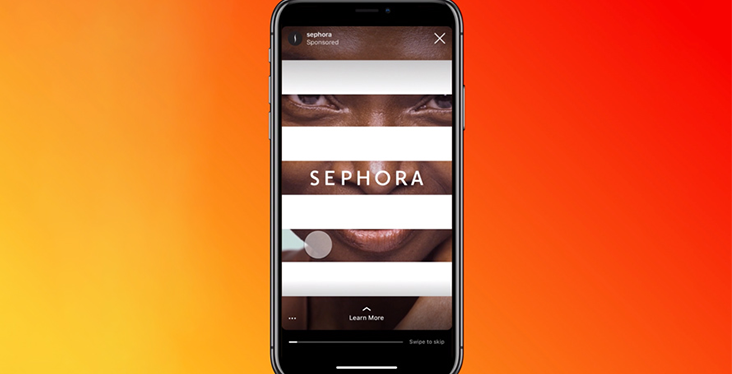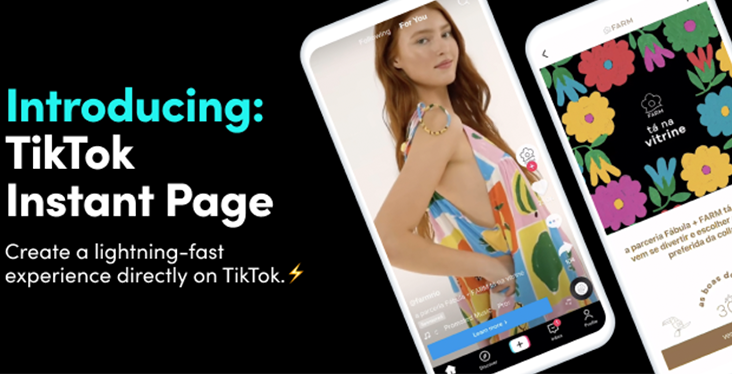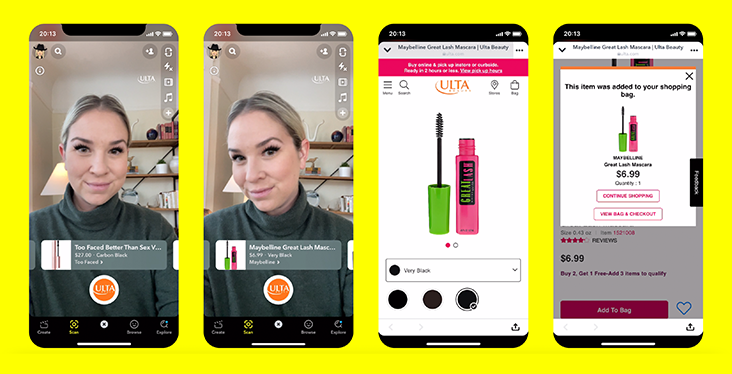Insta In-stream video ads streamlined

It appears that Instagram advertisers will no longer be able to serve in-stream video ads to users (these are the short vertical video ads that users see in between browsing Instagram Video content).
So what does this mean for brands? Well, advertisers affected by this shouldn’t be too concerned – they’ll still be able to serve relevant content to their audience using a combination of in-feed and Story ads. It’s also worth noting that as videos are going in a short format direction on Instagram, adverts should follow suit – this will result in content that feels native to the platform.
Get TikTok tactical

Need a few pointers on how to get the best out of your advertising on TikTok? Well, you’re in luck.
TikTok Tactics is a free marketing course providing tips and insights on how to use the platform for brand promotion and development.
The course focuses on four topics: attribution (web and app), targeting, bidding and optimisation, catalogue and creative, with each segment including a video and three ways to approach the different aspects, which vary in their level of marketer expertise.
Clearly, there are benefits for TikTok in providing such a resource, as they should see an uptick in the number of brands using their products and services. But this course will also be super-helpful for brands, who will get a much better understanding of the platform and give their ads a better chance of delivering. A win, win all round.
Tell TikTokers more, in an instant

TikTok has launched Instant Page for marketers – a native landing page option for TikTok in-feed ads geared towards traffic, conversion, reach and video views. Here’s how it works: Users tap on the call-to-action within the ad to be taken to the ad’s Instant Page, where they’ll learn more about the brand or offer. From here, they can visit the brand’s own website.
Here’s the best bit. Instant Page loads 11 times faster than standard mobile pages, so ads should have lower bounce rates and higher traffic. And because Instant Page is native, users seamlessly transition to a landing page from your ads to learn more about your products and services without leaving the app.
The numbers seem to add up, too. TikTok says that using Instant Page for campaigns optimised for conversion results in up to 20% lower cost per action and a 1.8x higher conversion rate than using an external landing page.
Instant Page is just the tip of the iceberg as far as TikTok’s advertiser features go. Handily, we’ve written an article all about their other features.
What men want

Pinterest’s latest study has shed light on male Pinners’ shopping habits, and the part Pinterest plays in that journey. And here are the top line findings:
- Male Pinners want a better work-life balance and are willing to make big purchases. 55% of male users are looking to go to cinemas and restaurants, while 30% are looking to buy a new car
- 50% of male Pinners are interesting in hosting parties at home, 60% are seeking new family activities
- 75% of male Pinners are looking to spend more money this year to get the things they want
Brands looking to reach male Pinners should do so early in their shopping journey; men perform fewer searches than women before making a purchase. Male shoppers are highly brand conscious and willing to pay more for brands they know, so trust is key – personalisation and helping them find the right item can help them be confident about their purchase.
AR shopping comes to Snapchat

Here’s an innovation that truly brings new meaning to ‘try before you buy’. Snapchat Shopping Lenses allow customers to virtually try on a range of different products like sunglasses, shoes and makeup using a single branded augmented reality (AR) Lens.
Each brand has its own lens, and each product within this lens has a banner telling consumers the product name and price. Users can click through to purchase, or swipe across to try on something else.
There’s an expanded range of pre-made Lens templates available for Snapchat’s Lens web builder tool, making it easier for brands to create their own Lenses, with these template available for beauty brands to start with, with other product categories following later.
And here’s why brands ought to be excited: 93% of Snapchatters are interested in shopping using AR. Another benefit is that users can virtually try on and learn about products without leaving the app, all the while giving brands insight into their product catalogue, including which products have the most virtual try-ons and sales from the Lens.
It may seem like a lot of effort to incorporate AR into a branded experience, especially for smaller brands. But there’s no doubt the streamlined Lens creation does make it quicker to implement – and with Pinterest, Instagram, and YouTube having launched similar features and now Snapchat following suit, this does suggest this particular feature is here to stay.
Too busy to create your own Lenses? No worries. Get in touch, and we’ll set them up for you!
Contact us at [email protected].